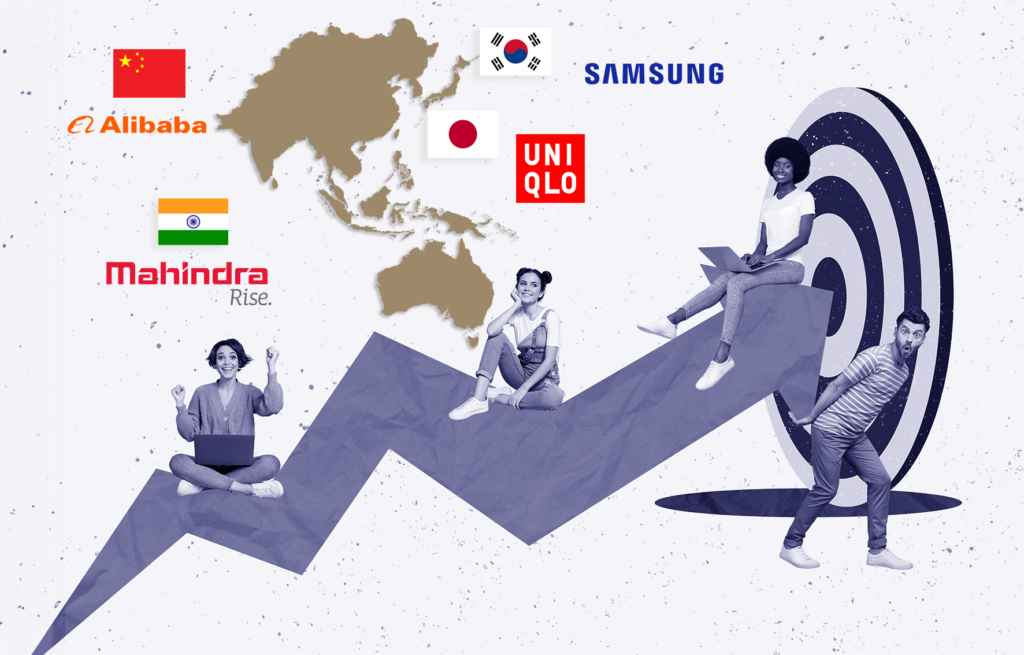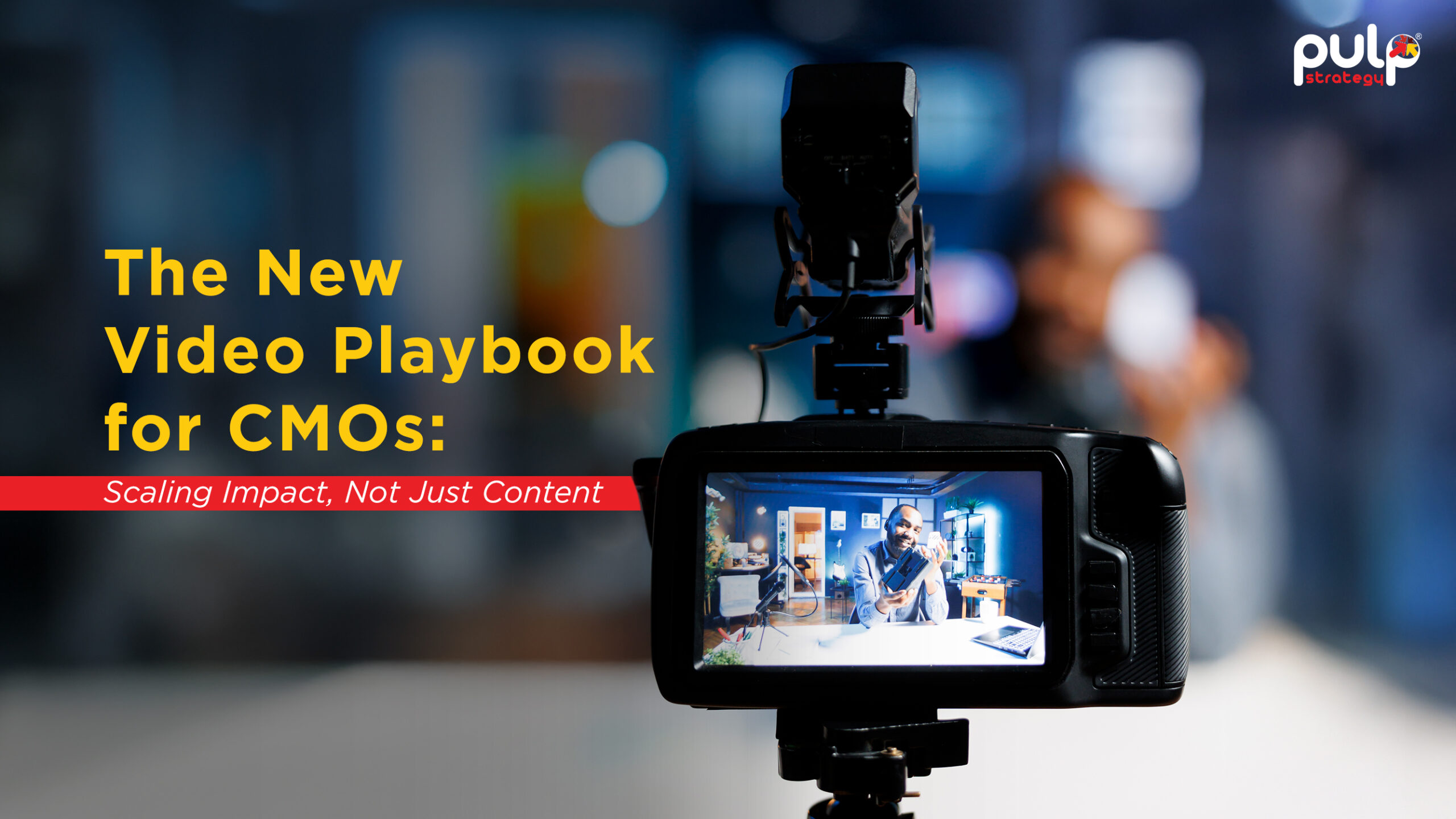Can a mindfully crafted story become a problem-solver? Is trust the new currency? It is time we rewrote the B2B narrative.
In the B2B world, where spreadsheets and specs reign supreme, captivating narratives weave their magic, forging genuine connections and fostering trust that transcends mere transactions. Welcome to the realm of storytelling, a powerful tool waiting to be unleashed in the dynamic landscape of B2B marketing, particularly in the vibrant tapestry of the Asia-Pacific (APAC) region. In this bustling marketplace, where diverse cultures and languages intermingle, simply listing features and functionalities is no longer enough. However, the path to B2B storytelling mastery isn't without its challenges.
The Numeral Supremacy

In an era of overwhelming choices and marketing messages, consumers crave authenticity. Let us catch a glimpse of how faith in a brand name influences numbers across the globe –
- A staggering 90% of customers report that authenticity is an important factor in deciding which brands they like and support.
- 86% of customers say authenticity is important when deciding what brands they like and support, evidently putting the need to speak your brand’s voice and vision across all communication spheres.
- Only a minimal 3% of B2B buyers trust sales pitches upon first contact. This can be perceived as a critical disconnect if not taken care of in the very beginning.
- 51% of B2B buyers place a higher emphasis on the trustworthiness of the source of the content they consume. This highlights the relevance of brands prioritizing genuine communication and establishing themselves as trustworthy sources.
Reinstating Trust and Authenticity: Is it Really Necessary?

The need to build trust and authenticity goes beyond simply making a sale. It's the foundation for establishing long-term, mutually beneficial partnerships that drive growth and success for both parties. Here are some key reasons why trust and authenticity in B2B relationships are crucial:
- Reduced Risk: B2B purchases often involve significant investments of resources and time. Having a trusted partnership reduces the perceived risk associated with the decision, making it easier for companies to commit to a long-term collaboration.
- Improved Decision-Making: Trustworthy partners provide reliable information and insights, enabling informed decision-making. This allows B2B customers to feel confident in their choices and ensures they are making the best possible investments.
- Increased Customer Loyalty: Building positive B2B relationships through trust and authenticity fosters customer loyalty. B2B customers are more likely to stick with a trusted partner, leading to repeat business and increased revenue streams.
- Enhanced Brand Reputation: A company known for its authenticity and transparency builds a stronger brand reputation. This attracts more potential partners, talent, and investors, ultimately contributing to overall business growth and success.
- Standing Out from the Crowd: In today's competitive market, differentiation is key. By prioritizing trust and authenticity, B2B companies can stand out from the crowd and establish themselves as reliable and trustworthy partners, attracting valuable collaborations.
Why does Brand Storytelling Matter?

People are inherently drawn to stories. They connect us on an emotional level, allowing us to understand experiences and build empathy. This is why brand storytelling has become a powerful tool for B2B marketers in APAC. By weaving narratives around your brand's values, mission, and impact, you can:
- Establish credibility: Demonstrate your expertise and experience through compelling narratives that demonstrate your understanding of industry challenges and solutions.
- Build emotional connection: Create resonance with your audience by sharing stories that evoke emotions and trigger positive associations with your brand.
- Foster trust and transparency: Utilize storytelling to be open and honest about your company's journey, including both successes and challenges. This fosters trust and positions you as a reliable partner.
Successful Use-Cases in APAC:

To further illustrate the effectiveness of storytelling in the APAC region, we need to consider including real-world examples of successful B2B campaigns:
- Mahindra (India): Launched the "Rise" campaign, celebrating the inspiring journeys of everyday individuals who overcame challenges using Mahindra's products. This resonated with the Indian audience's cultural values of resilience and community spirit.
- Alibaba (China): Utilized storytelling through its "Taobao Village" documentary series, showcasing how rural communities in China are embracing e-commerce through Alibaba's platform. This strategy resonated with the Chinese audience's growing internet adoption and focus on economic development in rural areas.
- Uniqlo (Japan): Launched the "LifeWear" campaign, focusing on the everyday lives of people wearing Uniqlo clothing. This campaign resonated with the Japanese audience's appreciation for practicality, comfort, and everyday functionality.
- Samsung (South Korea): Partnered with K-pop celebrities for its "Galaxy" phone series, leveraging the immense popularity of Korean pop culture to connect with a younger audience across APAC.
The Real Challenges and Their Breakthroughs
While you are establishing a deep-routed B2B relationships you will learn that it comes along with its challenges. Here are some key obstacles that can resurface:
- Information Overload: The B2B landscape is saturated with content, making it difficult to stand out and ensure your message reaches the right audience. This can lead to information overload and decreased trust, as potential customers struggle to discern genuine messages from marketing noise.
- Balancing Sales and Transparency: B2B marketing often needs to balance the need to promote products and services with the need for transparency. Overly promotional content can be seen as inauthentic and erodes trust.
- Complex Decision-Making Process: B2B purchases typically involve multiple stakeholders with diverse needs and priorities. Reaching everyone with the right message and fostering trust in a complex decision-making group can be challenging.
- Measuring Success: Unlike traditional marketing metrics, measuring the impact of trust-building efforts can be difficult. Gauging the true impact of storytelling and building trust often requires a long-term perspective and a combination of quantitative and qualitative data.
- Cultural Nuances: In multicultural regions like APAC, navigating cultural sensitivities and ensuring your storytelling resonates with diverse audiences adds another layer of complexity. Understanding local cultural nuances and adapting your approach accordingly is essential.
- Maintaining Long-Term Consistency: Building and maintaining trust is an ongoing process. Any missteps in terms of transparency, broken promises, or inconsistencies in your brand messaging can quickly erode the trust you've worked hard to build.
Strategies for Building Trust and Authenticity in APAC B2B Marketing:

- Focus on "We" over "Me": In APAC cultures, collaboration, and community are often highly valued. Shift your focus from solely highlighting your brand's achievements to showcasing stories that emphasize collaborative efforts and partnerships. Include customer success stories, testimonials, and case studies to showcase how your solutions benefit not just you, but the entire ecosystem.
- Embrace Cultural Sensitivity: Be mindful of the diverse cultural nuances and sensitivities present within the APAC region. Research your target audience and tailor your stories to resonate with their values and perspectives. Avoid generic narratives and ensure your stories are culturally appropriate and authentic.
- Leverage Local Voices: Partner with local influencers, industry experts, or even your employees from the region to share their unique perspectives and stories. This adds an authentic touch and fosters a sense of connection with the local audience.
- Prioritize Transparency and Authenticity: Be honest and upfront about your brand's strengths and weaknesses. Acknowledge challenges and address them with solutions. This transparency builds trust and positions your brand as a reliable and trustworthy partner.
- Utilize Multilingual Storytelling: In the multilingual landscape of APAC, cater to diverse audiences by translating your stories and content into relevant local languages. This shows respect and demonstrates your commitment to genuine communication with your audience.
Hit the “Track” Button:
Here are some methods to consider when measuring the impact of your trust and authenticity in B2B relationships journey, even if they come with their own challenges:
- Brand Awareness and Visibility: Track website traffic, social media engagement (likes, shares, comments), and brand mentions to understand how storytelling content impacts brand awareness. Monitor search engine rankings for relevant keywords associated with your stories and brand.
- Content Engagement: Analyze time spent on web pages featuring stories, video completion rates, and click-through rates on calls to action (CTAs) within storytelling content. Track downloads of white papers, eBooks, or other content pieces offered through storytelling campaigns.
- Lead Generation and Sales Pipeline: Use unique tracking URLs or landing pages associated with storytelling content to identify leads generated through these channels. Monitor the conversion rate of leads nurtured with storytelling content compared to those generated through other marketing efforts.
- Customer Satisfaction and Loyalty: Conduct surveys or collect feedback from customers who have interacted with your storytelling content. Track customer lifetime value (CLTV) and repeat purchase rates to understand if storytelling fosters stronger customer relationships.
- Qualitative Analysis: Analyze customer reviews, social media comments, and mentions to understand the sentiment and emotional response to your storytelling content. Conduct in-depth interviews with a sample of customers to gain qualitative insights into how storytelling has influenced their perception of your brand.
Trends to Watch Out and Hop Onto:

- Short-form video storytelling: Platforms like Instagram reels and YouTube Shorts are experiencing significant growth in APAC. Consider creating engaging short-form videos that capture attention and convey your brand message in a concise manner.
- Interactive storytelling: While data sources for the specific popularity of interactive storytelling experiences in APAC are limited, this approach can be highly engaging. Explore interactive elements like quizzes, polls, and branching narratives to create a more immersive storytelling experience.
- Data-driven personalization: Personalization is key in B2B marketing. Utilize data and analytics to tailor your storytelling content and delivery to resonate with specific audience segments and their unique needs.
Building trust and authenticity is a continuous journey, not a one-time event. By consistently incorporating these strategies and integrating powerful brand storytelling into your B2B marketing efforts, you can foster deeper connections, build trust, and achieve long-term success in the dynamic APAC market.







